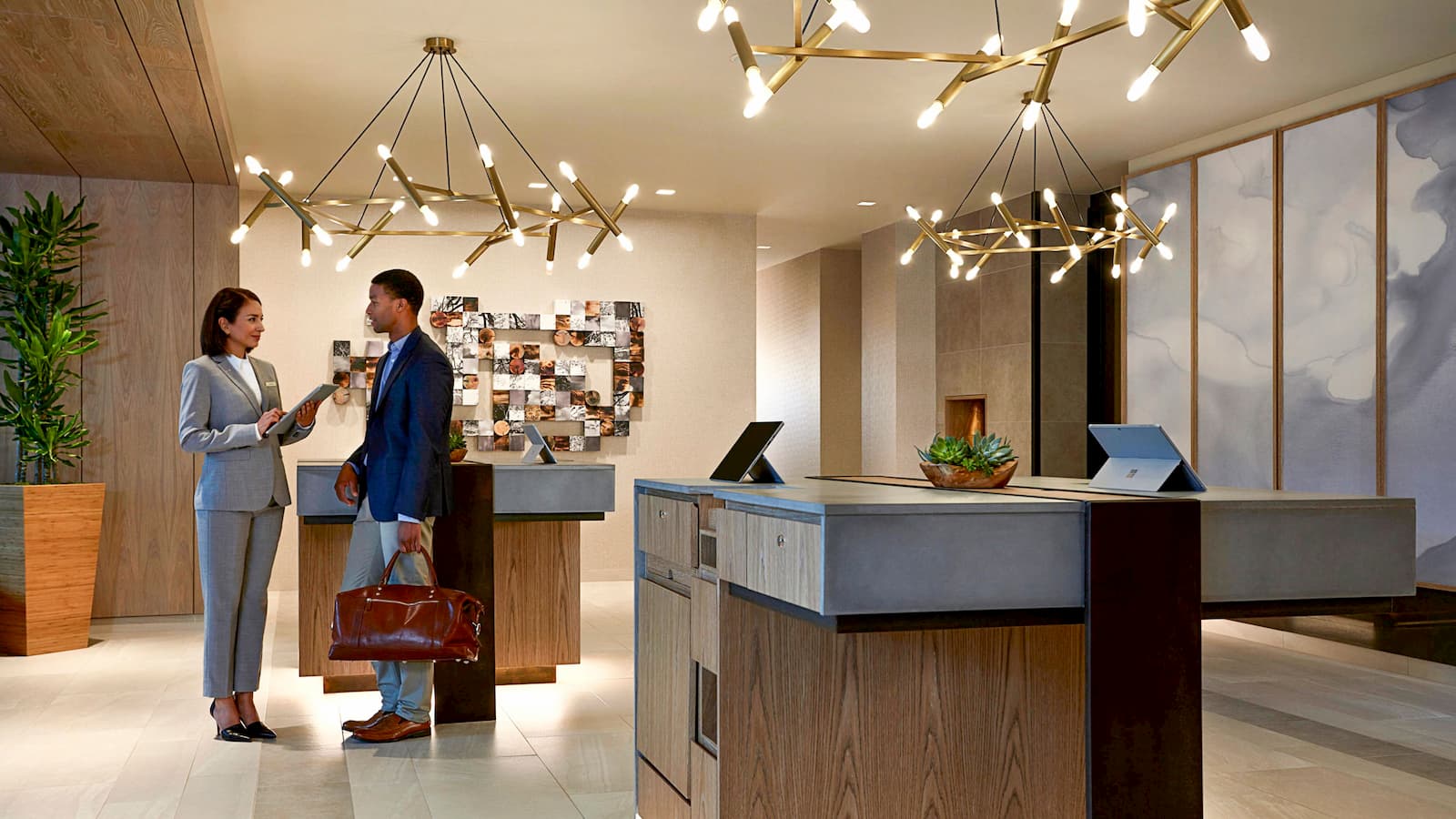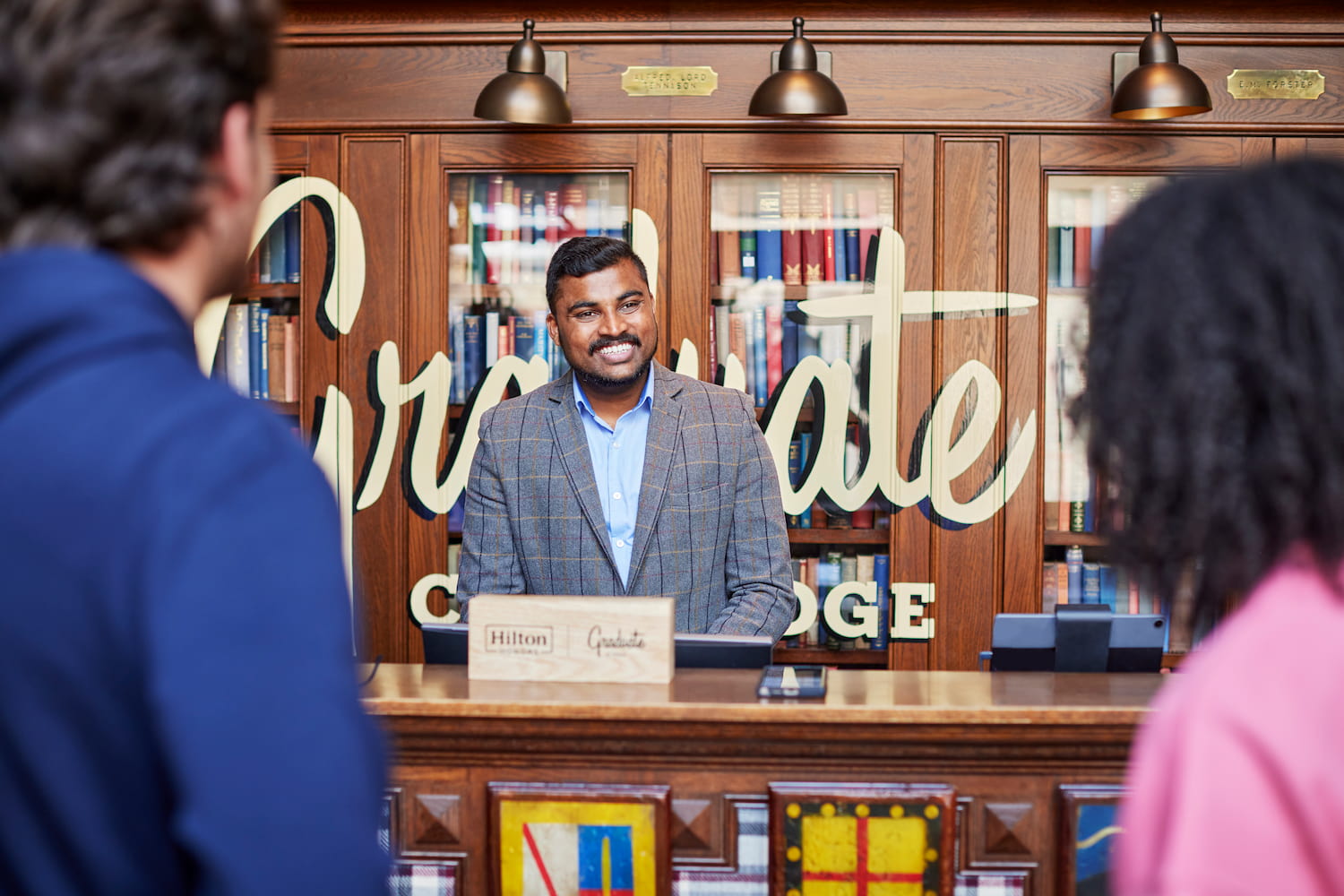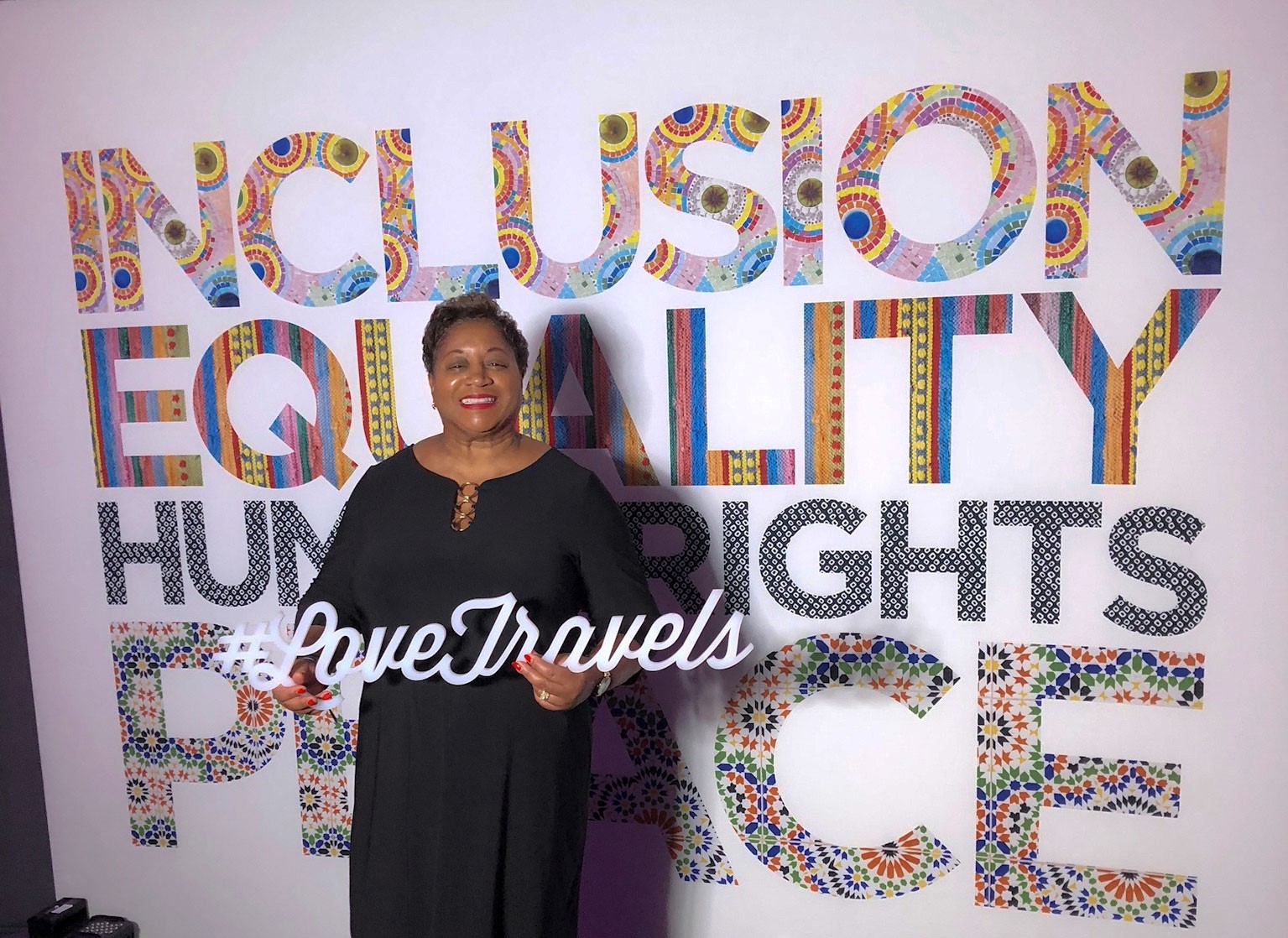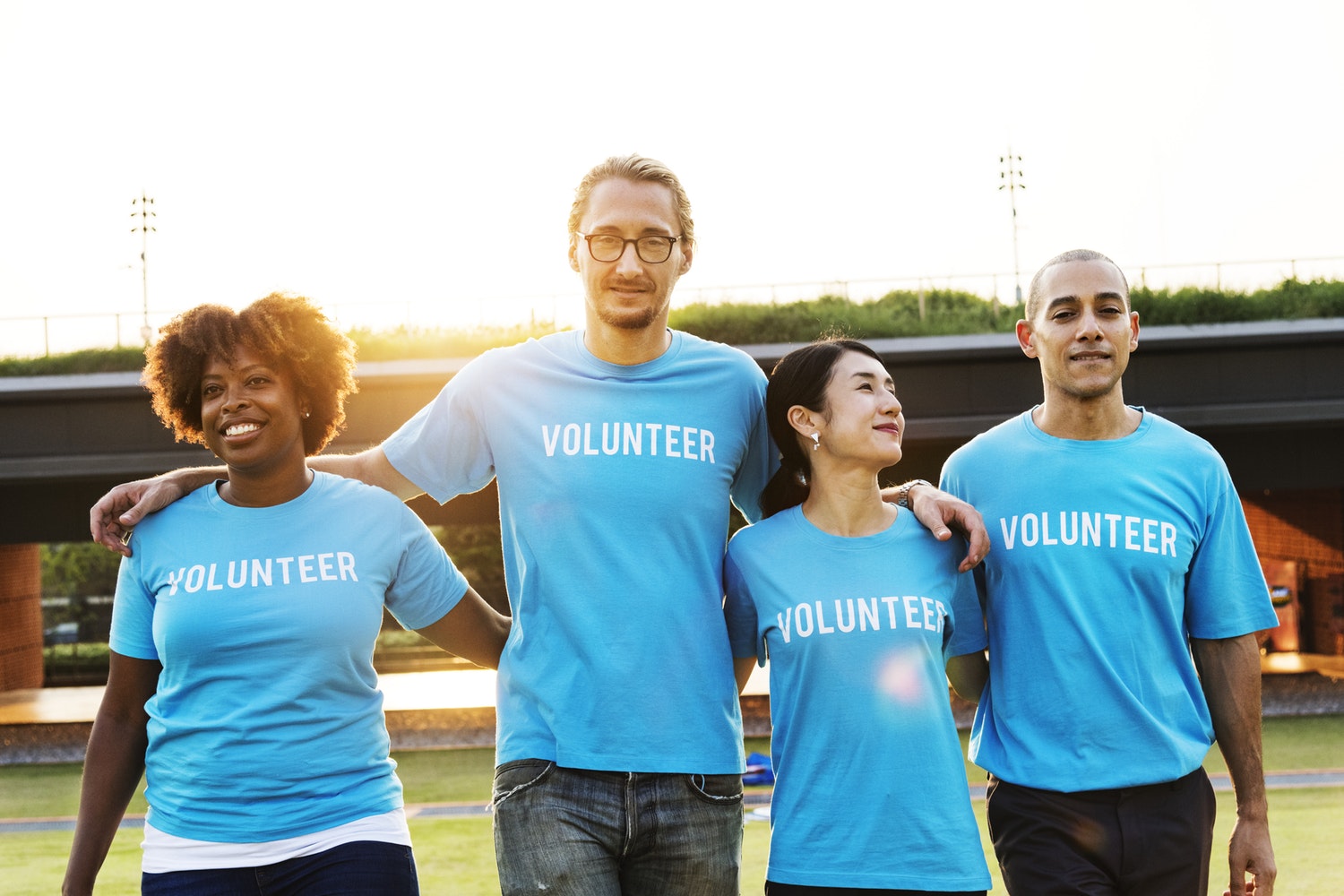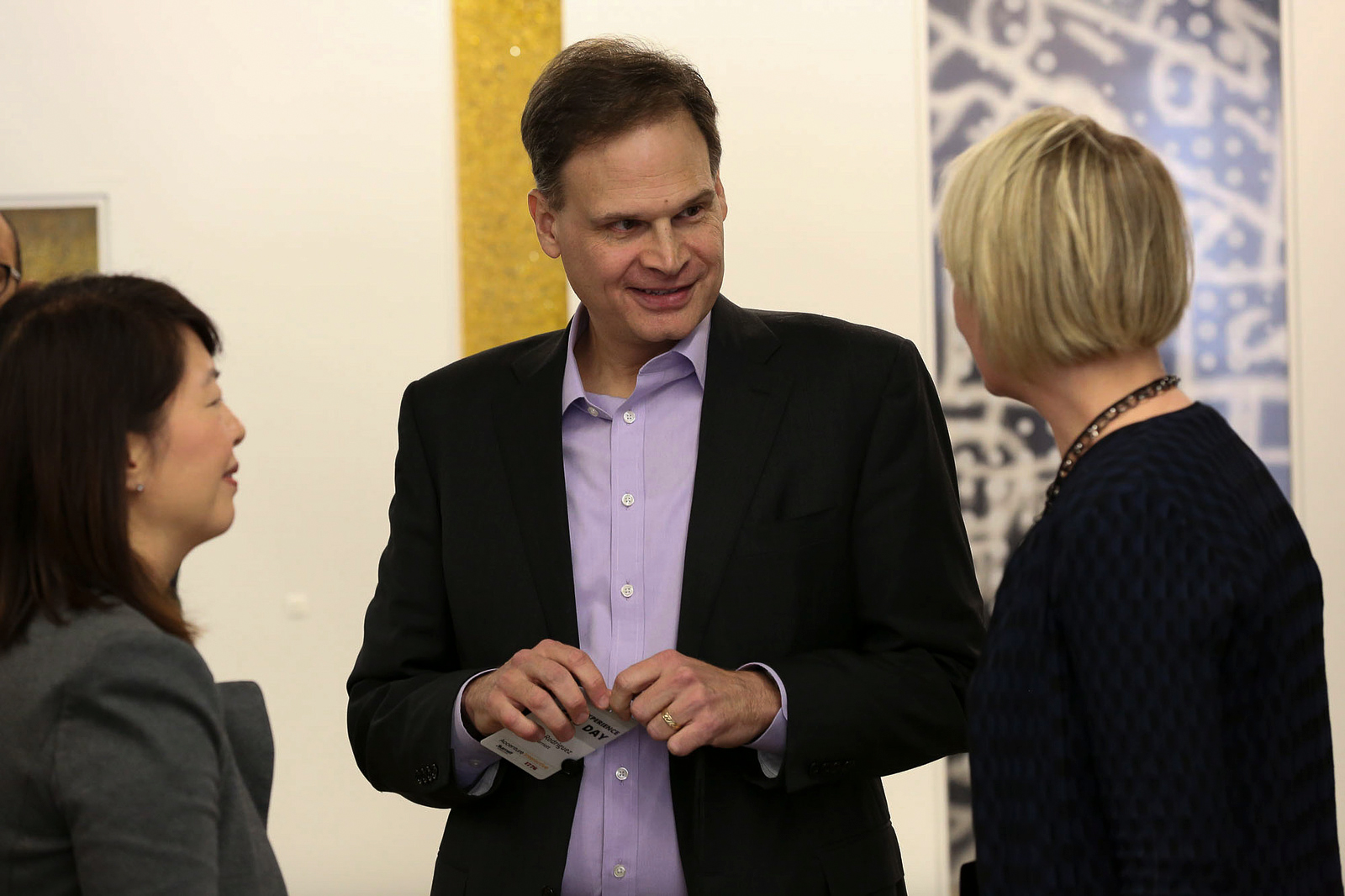
Diversity & Inclusion, FOR ALL, Innovation
From the outside, the M Beta hotel in the center of Charlotte, N.C. looks like a traditional urban business hotel, with a set-back entry and polished granite facade. But as soon as guests walk through the doors, it’s clear that this is far from a conventional hotel experience. For starters, there is not a standard check-in: associates greet guests as they walk in the door, or they can register on their phones and proceed to their rooms without having to talk to anyone. Instead of easily-lost plastic key cards, guests can use their phones to unlock their rooms. Fitness conscious visitors can choose from more than 600 streaming workouts in the gym.
The hotel has been around since 1984, but in 2013, Marriott spent $111 million to buy the property, renovate it and transform it into a living lab for hospitality ideas. Owning the property allows the company to implement new ideas and get rapid feedback from guests, using feedback buttons scattered throughout the hotel.
“In the past, we would try to perfect new programs here at HQ, then push it to hotels,” Jennifer Hsieh, Vice President of Customer Experience Innovation at Marriott. “We’ve flipped the paradigm—we do a lot of proof of concepts at our Hotel Labs now, with the first beta of a product that we feel good putting in front of customers. It doesn’t have to be fully automated or integrated into our systems. We engage associates and customers to co-create the best product or experience with us. That allows the company to take smarter risks, and also to work out the kinks of an idea in a realistic environment."
Hsieh says that a combination of culture and process result in the best outcomes for Marriott. On both sides—and in both innovation and diversity— the company is honed in on the human component. The culture of an organization might be to solve a problem though a financial lens, an operations lens or a consumer-focused lens. “You need all three,” Hsieh says. “But we lead with the customer in mind.”
A few years ago, one of Marriott’s luxury brands asked the innovation team to take a crack at solving the 'minibar problem'. Goods are notoriously expensive but they’re actually money-losers for hotels because of all the checking and refilling. "From a financial perspective, you might just take out the minibar, but guests will still wake up hungry and thirsty in the middle of the night," Hsieh says. "From an ops angle, you could install sensored systems, but that creates other problems, especially when there are mistakes."
The team eventually settled on a solution that would be best for guests, while also saving money for hotels. They put essentials in the room and launched an ordering system that allows guests to have snacks and meals delivered quickly. These insights and solutions are coming to hotels as part of the Mobile Dining solution, which will be scaling to 200+ hotels this year.
To generate such people-centric ideas, it’s essential to involve many different kinds of people, Hsieh says. “My team spans all generations and all ethnicities.” As effective as that team is, it can’t be the only source of new ideas and solutions for the entire $23 billion company. Marriott needs a constant stream of ideas from around the globe, which means it’s essential to cultivate a culture of openness.
Debbie Harrison, one of the founder's grandchildren and the company's Global Officer for Marriott Culture and Business Councils back up that sentiment, saying, "We empower everyone. There are no reprisals for speaking up.” In fact, 8 in 10 Marriott employees report that managers genuinely seek and respond to suggestions and ideas. The same share of employees also say that the company celebrates people who try new and better ways of doing things, regardless of the outcome. And this sense that everyone can contribute good ideas creates a virtuous cycle. When employees at Marriott and other companies have the power to innovate on the job, they are much more likely to have a positive experience at work, which further inspires people to speak up with suggestions.
The ability to invent fired up Alex Ahluwalia, Senior Vice President for Global Operations. When he was general manager at the JW Marriott Starr Pass in Tucson several years ago, his team of senior executives looked at guest evaluations and tried to identify a problem they could solve. They decided to attempt to elevate the guest arrival experience from a 78 percent score to an 83 percent score. “I love when an innovation objective is that clear and that tangible and that measurable,” he says. They started out by learning about guests’ pain points, giving customers phones to record their journeys from the freeway to the hotel. Armed with that information, they put the executive team in a van and made the trip over and over again. They did it at different times of day, with kids in the car and without, with people of different ages behind the wheel, to get as many perspectives as possible. They ended up dramatically changing the approach to the hotel—not by building or rerouting, but by adding signage, and changing lighting and parking configurations. They created a QR code guests could snap to help them navigate to the lobby, and installed a display about native quails to lead people there intuitively.
“We went through this innovation design process of building empathy with the customer, prototyping, iterating and building an experience that’s authentic,” he says. Before that, the resort was in the top 20 in arrival scores for the Marriott brand. In the years that followed, it was in the top five.
For the full story, read A New Marriott - For All and by All today.


